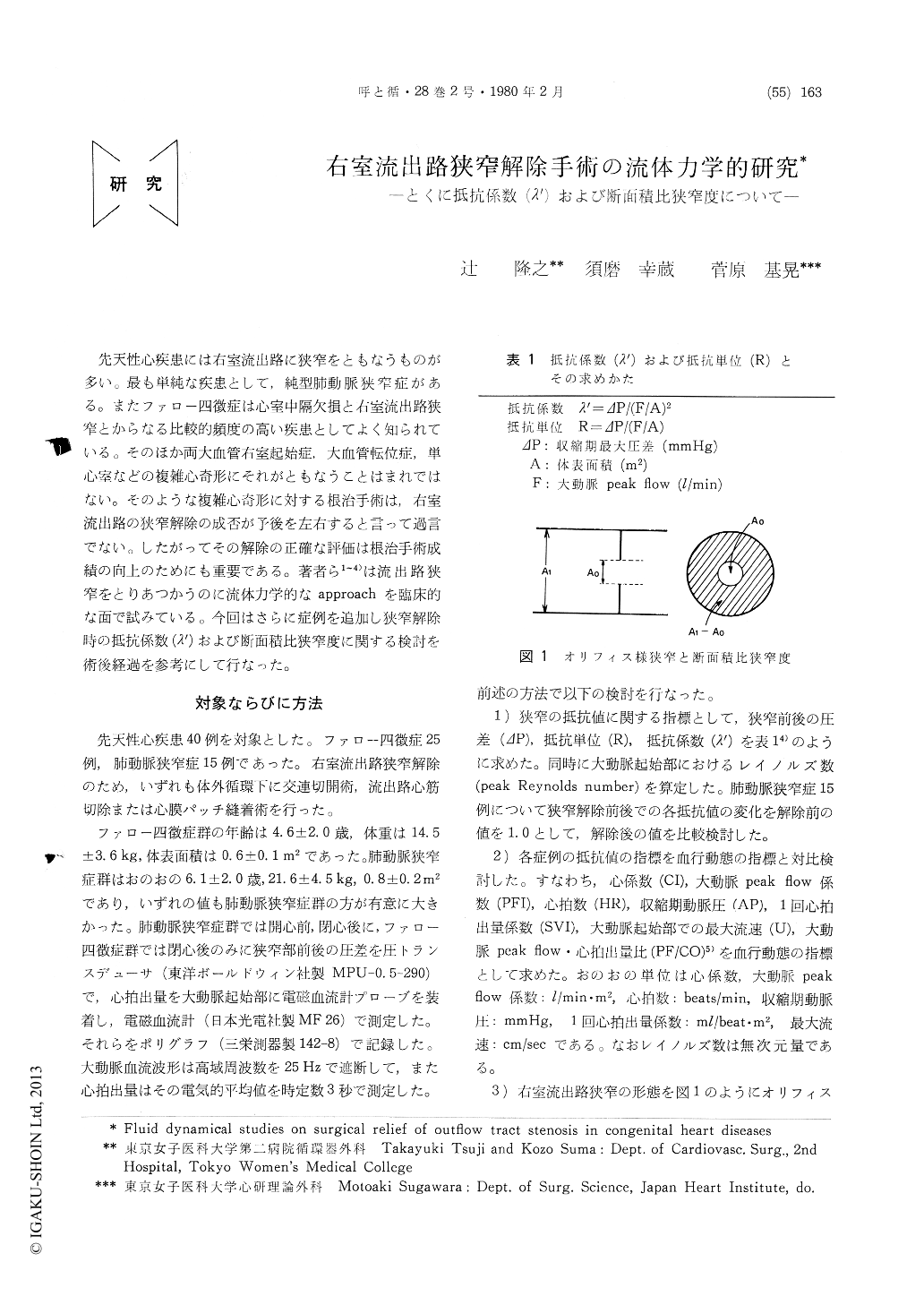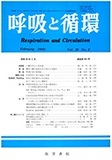Japanese
English
- 有料閲覧
- Abstract 文献概要
- 1ページ目 Look Inside
先天性心疾患には右室流出路に狭窄をともなうものが多い。最も単純な疾患として,純型肺動脈狭窄症がある。またファロー四徴症は心室中隔欠損と右室流出路狭窄とからなる比較的頻度の高い疾患としてよく知られている。そのほか両大血管右室起始症,大血管転位症,単心室などの複雑心奇形にそれがともなうことはまれではない。そのような複雑心奇形に対する根治手術は,右室流出路の狭窄解除の成否が予後を左右すると言って過言でない。したがってその解除の正確な評価は根治手術成績の向上のためにも重要である。著者ら1〜4)は流出路狭窄をとりあつかうのに流体力学的なapproachを臨床的な面で試みている。今回はさらに症例を追加し狭窄解除時の抵抗係数(λ′)および断面積比狭窄度に関する検討を術後経過を参考にして行なった。
Aortic peak flow and systolic pressure gradient across the stenosis in right ventricular outflow tract were simultaneously measured during oper-ation in 25 pts with T/F and 15 pts with PS using an electromagnetic flowmeter and pressure transducers. Assuming the stenosis to be orifice-like, grade of stenosis was regarded as a ratio of cross-sectional areas derived from the equation : λ=2ΔP/ρU2 (λ: drag coefficient, ΔP : systolic pressure gradient, ρ: blood density, U: peak velocity) and the nomogram representing the relationship between λ and cross-sectional area ratio. Critical grade of stenosis was found in these diseases to be 80±5% postoperatively. After the stenosis was relieved and the grade of stenosis showed a value less than 60%, post-operative course was normal. If it was less than 50%, operative cure was not at all indicated. However, if the grade was more than 85%, residual stenosis had to be subsequently relieved by surgical operation, otherwise the prognosis might be poor especially in the patient with T/F.

Copyright © 1980, Igaku-Shoin Ltd. All rights reserved.


